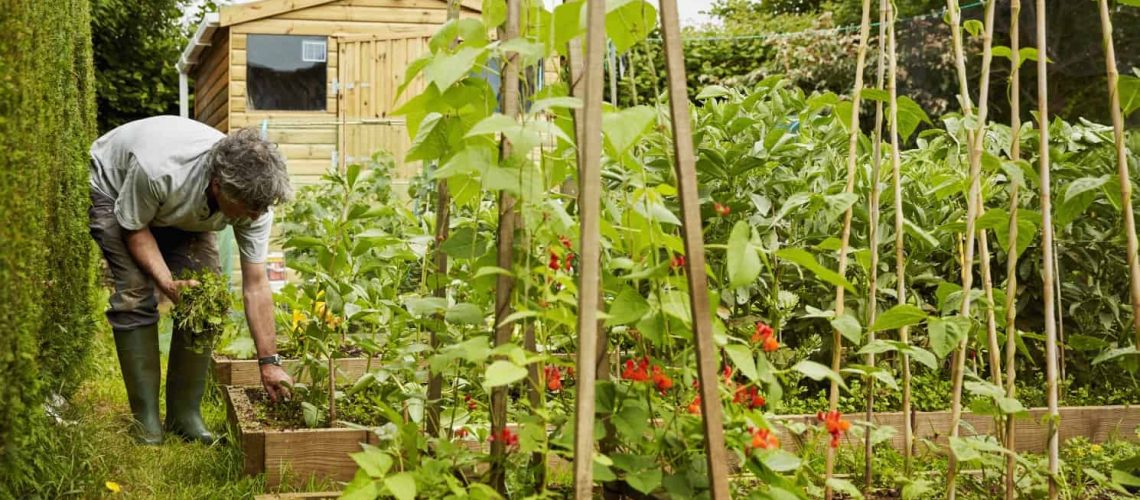Watering plants can prove to be a long and drawn-out process. If given a chance, you’re likely going to bounce onto something that is more effective and does not require your constant attention. While a necessary chore, you can use other ways to water your garden and not have to worry about over-watering it.
Leaving your garden bed for nature to irrigate might not be the smartest choice you make. It is up to you to make sure your plants get the water they need to thrive. If you’re reliant on nature for water, using a rain gauge will help you keep track of how much rain has fallen.
However, there are different kinds of soils with different abilities to hold water. Thus, you’re going to have to monitor the soil before you decide to water it. Understanding how to correctly water plants entail finding the best way to water raised-bed gardens for a thriving and healthy garden.
An ideal way to irrigate a raised garden bed is to provide a channel through which there is consistent watering whenever the plant needs it, is easy to use and maintain.
What are Raised Bed Gardens?
A raised bed garden is an ingenious way to grow herbs, flowers, fruits, and vegetables. While they can give an extremely productive yield, how you water the bed is going to differentiate between a healthy growing garden vs. one that is under-watered.
Here is how you can best irrigate a raised garden bed.

Drip Irrigation
Drip irrigation is one of the most effective ways to water your plant and simultaneously save time. While installing a drip irrigation system will take time, you’re going to be rewarded with a time-saving system that will last you for years upon years, especially if made with durable materials.
Plants tend to grow better and healthier as they receive a uniform amount of water, and it becomes easier to keep track of their requirements. A drip irrigation system also adds ease to watering by just having to turn the faucet on and off.
A drip irrigation system can also offer other benefits like reducing weed growth by delivering water to only the plants you want to grow and keeping away from the ones you don’t.
Invest in Quality Tubing
To properly create a long-lasting drip irrigation system, you need to do a good job the first time around; else, you’re going to waste money and time over something that will not last you longer than a season.
Using an in-line emitter tubing is a good option when it comes to selecting tubing products because it is durable, reliable, and engineered to work almost perfectly. The in-line emitter comes with pre-installed emitters every 6 inches. All you will have to do is, roll the tubing off the coil, cut it accordingly, and install it in your beds.
The spacing allows for emitters to provide a small continuous flow of water on either side of the tubing. You can plant seedlings beside the emitters or on each side of the tubing.
Have the Layout in Mind
Determining the layout of your irrigation system is not dependent on the length of your beds as much as it is important to have the right number of lines running across the width of your bed. If there are too few lines, your plants will not get ample water, or too many lines will waste water.
Installing the Tubes
Installing the in-line emitter tubing is simple and easy to do. Cut each line 12 inches shorter to the total length of your beds. At one end, the drip lines connect using the solid feeder line, and plastic connectors are inserted into the tubing.
How long to Run the Irrigation System?
For your plants to grow more healthy, it is best to let your irrigation system run daily. Watering your plants in intervals, especially vegetables and fruits, can stress out your plants, resulting in non-uniform growth and lower yields.
The frequency of running water each day over the bed depends on the size and age of your plants, the kind of climate you live in, and how much cloud coverage your area has. Early seasons usually mean you don’t water your plants frequently throughout the day, but more water later in the season as plants need more and are towards the flowering or fruiting phase.
While this is basic knowledge, you will have to research and consider variables that are specific to you, like the amount of water your tubing dispenses over a unit of time, to be able to calculate how long one cycle of watering will take and whether you need to water your bed again.
Just make sure you’re not letting your soil dry out completely. If the delicate root hairs die, rather than focusing on producing fruit, plants need to grow their roots out, take action accordingly by cutting branches that are flowering.
All in All…
Be aware of the needs of your plants by monitoring for signs of under-watering stress that are indicated by brown dry leaf edges or slow growth. This will help you determine how often your plant needs to be watered.
Over-watering can lead to wet soil, light green leaves, or yellow new growth. Be consistent with watering plants, which is where the irrigation system comes to the rescue. However, you, as a garden owner, will still have to make sure that there are fewer cases of over-watering or under-watering.

